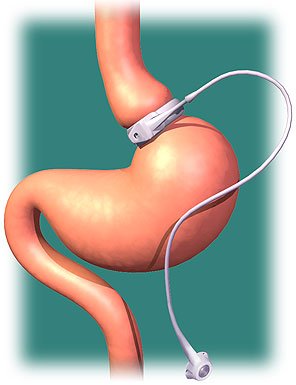This process is often prescribed to patients suffering from extreme or morbid obesity, diabetes (type 2), hypertension, sleep apnea and other cases of comorbidity. Mainly focusing at morbid obesity this procedure changes the way the stomach handles the food along with the small intestine. Post surgery the stomach becomes sizably small thus curbing your hunger and limiting the amount of food that you take in. This prevents the body from absorbing the entire calorie intake as the food does not reach some parts of the stomach and small intestine to break it down thus helping in losing weight.
As scary as it sounds, you will be given general anesthesia before the surgery which will help you sleep through the surgery making it painless!
There are primarily two steps that encompasses GBP, they are:
- Stomach size reduction – The first step is to make your stomach smaller in size, the surgeon divides your stomach into two sections – smaller upper section and lower larger part. The top section is reduced to the size of a walnut which will hold only one ounce of food, whereas normally it holds 6 cups of food opposed to ½ cup post surgery.
- Bypass – A part of the small intestine is connected to the stomach through a hole in the pouch. This changes the route of the food that you eat, now it will reach the pouch and travel through the small intestine, resulting in the body to absorb fewer calories.
This procedure can take place through two ways – Open Surgery and Laparoscopy. In today's time laparoscopy is preferred by surgeons as well as patients as it requires a small incision compared to opening up your belly. A camera is inserted into your belly through a small opening called laparoscope – this is connected to the monitor screen, where the surgeon is able to see within your stomach, thin surgical instruments are used complete the procedure which are interested through another small incision made. The benefits of laparoscopy are that it is less painful, reduces your hospital stay and heals faster leaving smaller scares than open surgery. The entire procedure of laparoscopy takes 2 to 4 hours.
Understanding that the procedure is done under general anesthesia making it as painless as possible; many would wonder why this procedure is not prescribed to more people suffering from obesity. Well that is because it is advisable to morbidly obese people – it might seem to be a quick fix for obesity but regular exercise and a check on eating habits should be maintained post surgery to avoid complications.
Some of the risks are as follows:
- Allergic reactions from medication
- Formation of Blood Clots in the legs
- Blood Loss
- Breathing Problems
- Cardiac failure or stroke
- Infection from cut incision
Hence it is advisable that the best medical attention needs to be provided to patients going through such procedure susceptible to complexities. One of the best healthcare organizations that provide laparoscopy or Gastric bypass surgery (GBP) is Jehangir Hospital in association with Apollo Hospitals Group based in Pune. For more information follow: http://www.jehangirhospital.com/

 Gastric bypass of GBP are a series of similar surgeries that divides the stomach into upper part (pouch) and larger lower part the remnant part and the rearranges the small intestine to connect both. – Wikipedia.
Gastric bypass of GBP are a series of similar surgeries that divides the stomach into upper part (pouch) and larger lower part the remnant part and the rearranges the small intestine to connect both. – Wikipedia.